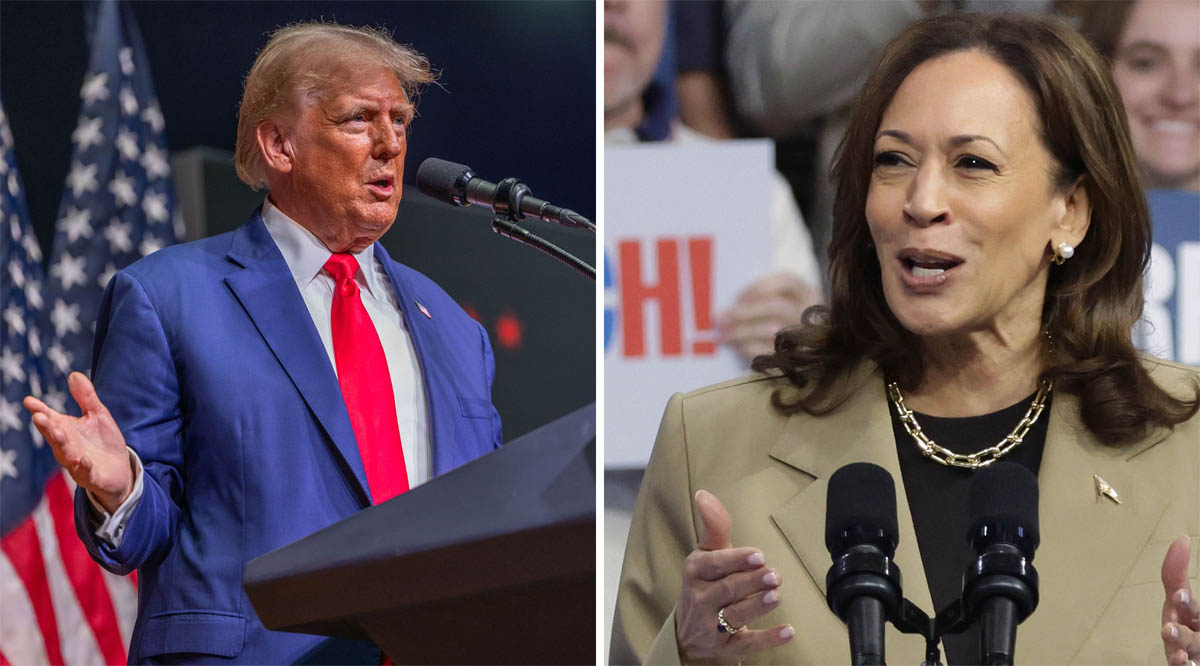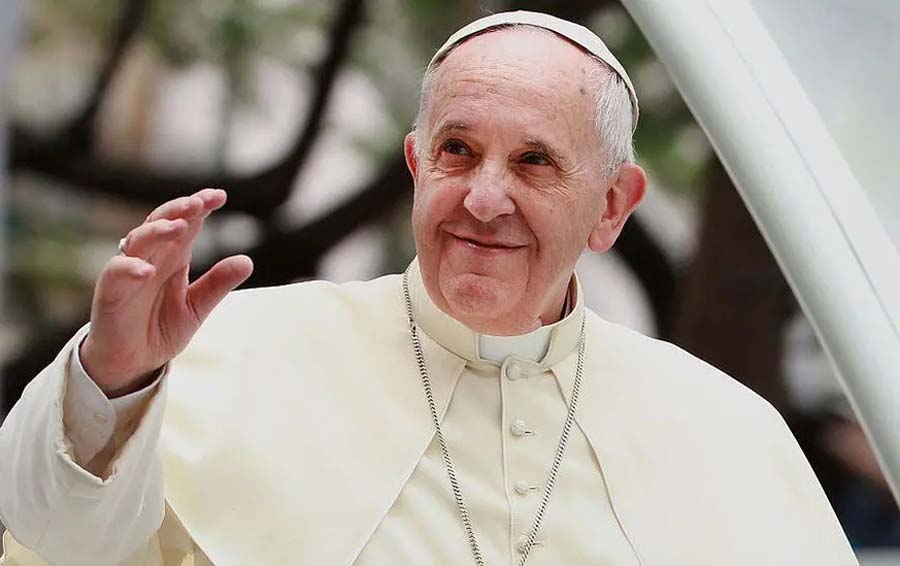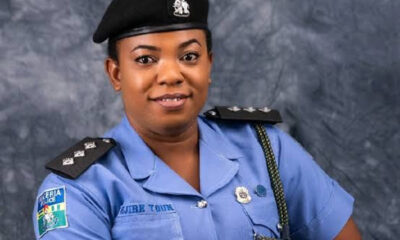A line repeated by his vice presidential pick, Ohio Senator J. D. Vance.
How Electoral College, not popular votes, picks US president
(NANFeatures)

How Electoral College, not popular votes, picks US president
Although the United States prides itself on being the world’s preeminent democracy, where each person can have their say about who should be president, the Constitution calls for states to choose “electors” who do the actual electing.
This is known as the Electoral College.
This includes the first presidential election in 1789, won by George Washington; there have been 59 U.S. elections.
In all but five, two in this century, the president has won both the popular votes and the Electoral College votes.
In 2000, Democratic candidate Al Gore garnered 543,895 more votes nationwide than Republican George W. Bush.
But in a contentious race that went all the way up to the Supreme Court, the judges decided to end a recount in Florida, giving the state’s then 25 electoral votes to Bush.
This took Bush past the magic number of 270 electoral votes and ensured him the presidency.
In 2016, when Donald Trump was elected, Hillary Clinton won the popular vote by a much bigger margin, receiving 2.9 million more votes nationwide.
But Trump became president because he garnered 304 electoral votes to Clinton’s 227.
If the number of electoral votes is tied, then the election is decided by the newly elected House of Representatives.
Each state is allotted electors equal to their number of representatives in Congress.
This means there are 538 electors in total: 435 representatives and 100 senators, plus three for the District of Columbia.
If a candidate wins 270 electors or more, therefore, he or she wins the presidency.
In 48 states, the candidate with the most votes, however slim the margin, wins all the state’s electoral votes.
Maine and Nebraska do things differently and allocate electoral votes by individual congressional districts.
Some critics regard the Electoral College as an anachronism and would replace it with a national popular vote.
They say that the Electoral College makes a mockery of the “one person, one vote” system the country extols.
Furthermore, it causes candidates to concentrate their campaigns primarily on a handful of swing states where the vote could go either way, turning the majority of voters elsewhere in the country into bystanders.
But proponents say the reverse would happen if the president were elected by the popular votes.
Then candidates would concentrate their campaigning in the big states—California, Texas, and New York—and voters in smaller states would be the onlookers.
But what really do the two major candidates in the U.S. presidential election represent?
Kamala Harris is the first woman, first black person, and first person of South Asian descent to be vice president of the United States.
After four years in the second highest office, she now wants to make history again by holding the top job.
She received President Joe Biden’s blessing when he stepped back from being the Democratic candidate just three months ago, triggering her whirlwind campaign.
Harris was born on Oct. 20, 1964, in Oakland, California. She often touts her middle-class upbringing to voters: her father Donald migrated from Jamaica to study economics; her mother Shyamala, a cancer researcher and civil rights activist, came from India.
They married in 1963 and separated when Harris was 5 years old.
Harris, 60, has largely played down her gender and race. But she has said that India is an important part of her life.
When she and her younger sister Maya were children, their mother travelled with them to India almost every other year to see relatives there—and to instill in them a love of Indian food.
Shyamala died of colon cancer in 2009. Harris rarely speaks of her father, who went on to become a professor at Stanford University. She once told an interviewer that they are not close.
Harris became the first black district attorney of San Francisco in 2002, and later she served for six years as California’s attorney general.
When she moved to the U.S. Senate in 2017, she used her experience as a prosecutor to make her mark at high-profile hearings by grilling witnesses, from Trump officials to Supreme Court nominees.
Harris met her partner Doug Emhoff, an entertainment lawyer, relatively late in life.
A friend set up a blind date for the two of them in California, where they were living at the time in 2013.
They married the following year.
Emhoff has two adult children from his first marriage: Cole and Ella.
As the first husband of a vice president, Emhoff is also the first “Second Gentleman” of the United States.
Should Harris win and become the first woman to ever hold the presidency, he would be the very first “First Gentleman.”
Donald Trump’s rise to the U.S. presidency, which he held from 2017-2021, upset many assumptions and taboos, but perhaps just as surprising is that he has brushed off two impeachments, a criminal conviction, and several other threats to contend again for the White House.
His come-from-behind win against Hillary Clinton in 2016, by claiming outsider status and promising to bring a businessman’s acumen for dealmaking to the White House, shocked the U.S. political system and fundamentally changed the Republican party.
In 2024, four years after losing to Joe Biden, he still casts himself as the man to shake up U.S. politics by taking on the corrupt elites.
All the while he has kept his brash campaign style, prone to riffing on theories well outside the mainstream, and rarely shying away from an opportunity to personally insult or belittle his opponents.
If Trump wins, the 78-year-old would be the oldest person in U.S. history elected president.
Born June 14, 1946, he was the fourth of five children of Frederick Trump, a real estate magnate who bequeathed a small New York empire to his family.
At age 13, Trump’s parents sent him to a military academy.
The future president went on to study at Fordham University and then the University of Pennsylvania’s prestigious Wharton School of Business.
After graduating from Wharton, he joined his father’s business and, in 1974, became its president and renamed it the Trump Organisation.
Investments in hotels, casinos, golf courses, luxury apartments, and beauty pageants followed.
As the star of the TV reality show “The Apprentice,” he relished delivering bad news to failed contenders, telling them curtly, “You are fired.”
Trump dipped into politics from time to time but seemed galvanised under the administration of Barack Obama and morphed into a right-wing populist.
He loudly peddled the lie that Obama was not born in the United States.
Trump’s critics, which include several high-profile members of his first administration, have cast him as chaotic, divisive, and a threat to democracy.
General John Kelly, his former chief of staff, recently likened him to a “fascist.”
His rhetoric has been crude and dark at rallies, veering from crass insults to false claims and menacing warnings, like his suggestion this month he could use the military to handle what he called “the enemy from within.”
Like in 2016, his 2024 campaign has put an anti-immigration stance front and centre.
In 2016, he said some Mexican immigrants were rapists and murderers; this year he baselessly accused Haitian immigrants of eating pets in the town of Springfield, Ohio.
A line repeated by his vice presidential pick, Ohio Senator J. D. Vance.
(NANFeatures)

Thousands pay tributes as Pope Francis’ body lies in state at St. Peter’s Basilica
Vatican City was filled with the sounds of bells and heartfelt chants on Wednesday morning, as thousands of mourners gathered to honor the late Pope Francis.
In a moving and solemn procession, his simple wooden coffin was carried through St. Peter’s Square, marking the beginning of final rites for the beloved pontiff.
The procession began at the Domus Sancta Marta, the residence where Pope Francis passed away, and continued toward St. Peter’s Basilica. There, his body will lie in state until his funeral, scheduled for Saturday.
Two long lines of cardinals and Vatican officials escorted the coffin, while faithful from around the world looked on in prayer and reverence.
Dressed in a red chasuble and a white miter, with a rosary gently wrapped around his fingers, Pope Francis was honored with continuous applause as Swiss Guards solemnly accompanied the casket through the square.
Teresa Piuvano, a New Jersey resident who has been in Rome since March volunteering at Vatican events for the Jubilee year, saw Francis’ appearances on Palm Sunday and Easter Sunday. Easter, she said, “was the most special. I think he wanted to do that to say goodbye to the people because he rode around the whole square even though he was very ill.”
Inside the basilica, the pope was laid on a simple podium instead of the wooden structure, called a catafalque that has traditionally held a pope’s coffin as he lies in state. The ceremony that concluded the procession, led by Cardinal Kevin Farrell, who as camerlengo is charged with overseeing the logistics of the pope’s funeral, referred to Francis in humble terms such as “bishop” and “pastor.”
READ ALSO:
“Dearest brothers and sisters, with great emotion we accompany the mortal remains of our Pope Francis into the Vatican basilica where he often exercised his ministry as the bishop of the church that is in Rome and as pastor of the universal church,” Farrell said in the prayer service.
After the death of Pope Emeritus Benedict XVI, Francis changed the protocol for papal funerals to streamline and simplify the procedures. The pope wanted his own funeral to reflect the life of a pastor and not of a powerful king or politician, he said in interviews.
After the ceremony, cardinals proceeded to bow one by one in front of the coffin before the mourners lined up in the square were admitted.
Nearly 20,000 people visited the basilica yesterday, according to the Vatican, which added that it would ensure that all who wish to pay their final respects to the pope have a chance by staying open after midnight if necessary.
Second General Congregation of Cardinals held in the Vatican
The second General Congregation of Cardinals began yesterday afternoon in the Synod Hall at about 5:00 PM, and ended at 6:30 PM.
According to the Holy See Press Office, 103 cardinals were present. They began the meeting with the ‘Veni, Sancte Spiritus’ prayer, and then with a prayer in suffrage of Pope Francis.
The Cardinals who were not present at Tuesday’s General Congregation were sworn in.
The programme of the Novemdiales, the ancient nine-day period of mourning for the Pope, was approved.
The next General Congregation will be today at 9:00 AM.
At the first General Congregation, held on Tuesday morning, the Cardinals decided to suspend all scheduled beatifications until the new Pope can approve them.
Moreover, in accordance with the norms of Universi Dominici Gregis, a commission of three Cardinals was selected by lot to assist the Camerlengo in the governance of the Church during the sede vacante.
These three Cardinals represent the three orders of the College of Cardinals and are replaced every three days. The first group of three Cardinals chosen was Pietro Parolin (episcopal order), Stanisław Ryłko (presbyteral order), and Fabio Baggio (diaconal order).
The Holy See Press Office noted that around 20,000 people had paid their respects to the late Pope Francis as of 7:30 PM on Wednesday evening.
Why King Charles isn’t allowed at pope’s funeral
Prince William will be traveling to the Vatican to attend the funeral of Pope Francis on behalf of the British royal family later this week. And if you’re wondering why King Charles isn’t going, he literally isn’t allowed.
Royal expert Katie Nicholl writes in Vanity Fair that King Charles “will not travel to the Vatican, in accordance with protocol and precedence which dictates that the Sovereign does not attend funerals, Buckingham Palace has confirmed.” And FYI, this isn’t the first time an heir has attended the funeral of a pope on behalf of the sovereign—back in 2005, then-Prince Charles attended Pope John Paul II’s funeral instead of Queen Elizabeth.
That said, King Charles did visit the pope just a few days before his recent passing, and he released a statement after his death.

UK records over 22,000 asylum-seeking Nigerians
Nigerians accounted for one in every 30 UK asylum claims over the time, ranking 11th in the Home Office’s recently released year-end asylum and resettlement figures.
According to the Home Office, over two times as many Nigerians (2,841) requested asylum in 2024 than in 2023 (1,462).
Overall, 108,138 people applied for asylum in the UK in 2024, representing a 378 per cent increase from 2010. The majority were first-time claims by South Asian and Middle Eastern nationals.
Iran topped the chart with 75,737, perhaps pushed by the rising persecution of dissidents by the Iranian regime.
Pakistan trailed far behind with 57,621. In 2024, 10,542 Pakistanis sought asylum in the UK, prompted by post-election upheaval, rising inflation, and an increase in blasphemy cases, which human rights groups argue provide strong grounds for protection claims.
Afghanistan has received 54,363 asylum petitions since 2010. In 2024, 8,508 Afghans sought sanctuary in the United Kingdom, a development that experts suggest is a continuation of the Taliban’s ouster of the Karzai administration in 2022.
That year, 11,358 Afghans applied for asylum in the United Kingdom, with 9,710 applications the following year.
Others include Albania (50,944), Iraq (45,711), Eritrea (37,687), Syria (34,997), and Bangladesh (31,744). Asylum seekers from Bangladesh increased from 5,097 in 2023 to 7,225 in 2024. The rise corresponded with the removal of previous Prime Minister Sheikh Hasina.
READ ALSO:
Sudan and India complete the top ten, with 30,897 and 30,179, respectively.
Nigeria’s 22,619 filings are just ahead of Sri Lanka’s 22,059 and surpass Vietnam, China, and Turkey. Brazil, Kuwait, Yemen, Colombia, and Jordan were at the bottom of the list, with each providing fewer than 6,500 claims.
Analysts attribute Nigeria’s rise on the list to tough conditions such as insecurity, bandit assaults, abduction, and a collapse in household purchasing power following the naira’s devaluation in 2023.
In a conversation with our correspondent, Charles Onunaiju, Research Director, Centre for China Studies, Abuja, stated, “We face a difficulty. Nigeria is becoming unfriendly, particularly for young people with limited opportunities, and there is a desperate desire to travel overseas.
According to local reports, young professionals who previously entered the UK on skilled worker visas are increasingly hedging their bets by applying for asylum once there; others arrive irregularly via continental Europe, citing kidnapping threats and communal attacks in their affidavits.
According to the reports, in most cases, petitioners also claim political persecution under Nigeria’s wide cybercrime legislation or discrimination based on sexual orientation—both of which are protected under the Refugee Convention.
According to the Home Office’s website, an asylum seeker must demonstrate a “well-founded fear of persecution” because of their race, religion, nationality, political opinion, or membership in a certain social group.
The Home Office determines the initial decisions, and negative rulings can be challenged in the Immigration and Asylum Chamber.
In theory, the Illegal Migration Act of 2023 makes people who travel through a safe third nation inadmissible.
However, the UK government’s proposed removal process, particularly its contract with former Prime Minister Rishi Sunak to transfer claimants to Rwanda, is still enmeshed in legal obstacles.
As a result, the majority of 2024 and 2025 arrivals will continue to use the existing system.
Dr Aliyu Ilias, an Abuja-based development economist, told The PUNCH that as more Nigerians leave and stay permanently overseas, the country will have less trained labour.
He stated that with most Nigerians confronting both economic headwinds and deteriorating security at home, the British asylum route, however uncertain, still appears to offer a better prospect.
Ilias explained, “It’s definitely a cause of concern because this includes our professionals who are moving, and it takes a whole lot to train these professionals.
“In the medical sector, Nigeria subsidises a lot to get people trained. You cannot get trained as a medical doctor or an engineer abroad for a cheaper cost compared to what we get in Nigeria.
“So, it is total brain drain in the long run, and for the economy, it is reducing our GDP. The appalling part is that most of our Nigerian brothers and sisters who go out do not return. They get permanent residency, and they become valuable to the immediate country.”

Harvard University sues Trump over funding cuts
Harvard sued US President Donald Trump’s administration Monday in a sharp escalation of the fight between the prestigious university and the Republican, who has threatened its funding and sought to impose outside political supervision.
Trump has sought to bring several prestigious universities to heel over claims they tolerated campus anti-Semitism, threatening their budgets, tax-exempt status and the enrolment of foreign students, but Harvard has refused to bow.
“This case involves the Government’s efforts to use the withholding of federal funding as leverage to gain control of academic decision making at Harvard,” the Ivy League university said in a lawsuit filed in a Massachusetts federal court that named several other institutions targeted by Trump.
“The Government’s actions flout not just the First Amendment, but also federal laws and regulations,” said the complaint, which called Trump’s actions “arbitrary and capricious.”
Trump is furious at Harvard for rejecting government supervision of its admissions, hiring practices and political slant and last week ordered the freezing of $2.2 billion in federal funding to the storied institution.
The lawsuit calls for the freezing of funds and conditions imposed on federal grants to be declared unlawful, as well as for the Trump administration to pay Harvard’s costs.
Trump and his White House team have publicly justified their campaign against universities as a reaction to what they say is uncontrolled “anti-Semitism” and a need to reverse diversity programs aimed at addressing historical oppression of minorities.
READ ALSO:
The administration claims protests against Israel’s war in Gaza that swept across US college campuses last year were rife with anti-Semitism.
Many US universities, including Harvard, cracked down on the protests over the allegations at the time, with the Cambridge-based institution placing 23 students on probation and denying degrees to 12 others, according to protest organizers.
“Harvard can no longer be considered even a decent place of learning, and should not be considered on any list of the World’s Great Universities or Colleges,” Trump said on his Truth Social platform last week.
“Harvard is a JOKE, teaches Hate and Stupidity, and should no longer receive Federal Funds.”


Rivers: Tinubu meets with Fubara, may lift his suspension


Bring your children to compete with mine, MC Oluomo challenges those mocking his spoken English


I’m not in supremacy battle with Ooni, says new Alaafin


Marketers count losses as NNPC slashes petrol price


Rivers: Fubara’s supporters praise Tinubu’s intervention with emergency rule


P-Square: Jude Okoye freed after two months detention


Bandits attack Kwara North, kill vigilante, six others


Nigeria’s gas production increases by 15.6% to 227,931.65 mscf